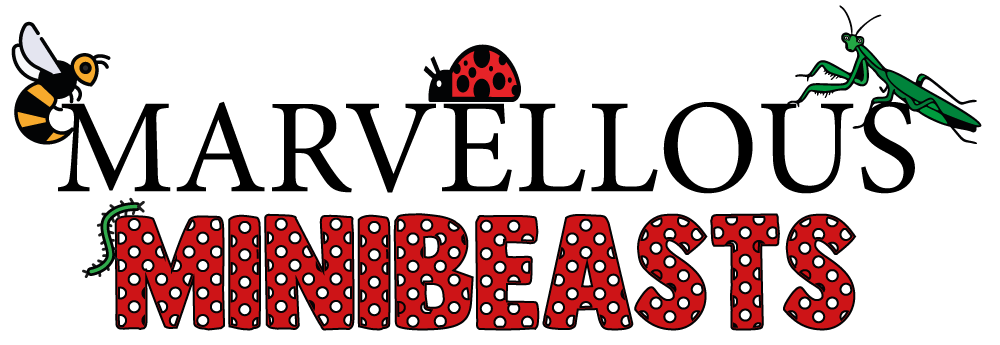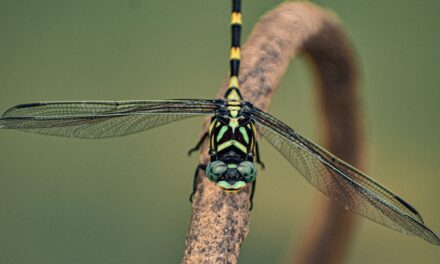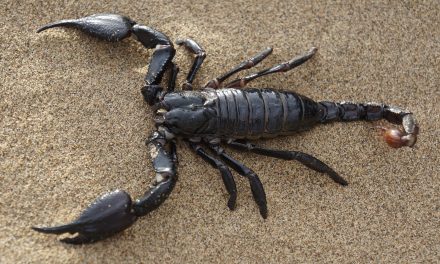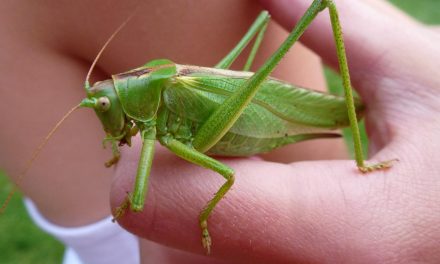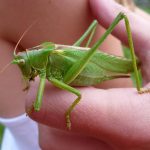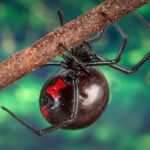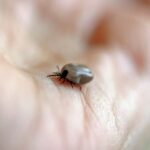There are many insects that are not safe to pick up; these range from insects that bite and sting to those that are toxic and venomous. This article will tell you which insects are not safe to pick up and why, so keep reading. When it comes to handling insects, the rule of thumb is; if it is brightly coloured has pincers, spines or a stinger, you should not try to handle it.
Insects have a built-in defence mechanism to stop them from being eaten by birds or other predators. Some insects may even appear to be venomous or toxic by mimicking insects that are. Take the ladybug; for instance, they are bright red and spotty, making them appear poisonous and venomous when they are actually harmless.
You can buy some excellent insect explorer kits that will allow you and your children to investigate insects without picking them up directly. We recommend these kits when you are starting to introduce insects and bugs to children, especially the little pots that magnify insects; the children can investigate and explore without fear. Once your children are confidently handling insects and bugs in pots, they are likely to open to the idea of holding them directly. Never force your child to hold an insect if they are scared, as it will only heighten the fear.
Puss caterpillar
The puss caterpillar is one insect you do not want to mess with, it may look cute and furry, but it packs a nasty punch. Its spines are venomous, but because it looks cute and cuddly, people, especially, children can’t help but want to touch it. It is then they realise that this is one dangerous insect and it should be avoided at all times.
What happens if you get stung?
It is said that the puss caterpillar sting feels like that of a jellyfish sting, only a whole lot worse. Once you have been stung, the pain is immediate and continues to get worse. Victims of this caterpillar have said that it was similar to the pain of having a broken bone or blunt force trauma.
The sting severity depends on what part of the body was stung and how many spines were transferred into the skin. People stung on the hand reported pain radiating up to their shoulder and stated that this pain lasted around 12 hours.
Other symptoms include;
- Burning
- Swelling
- Nausea
- Headache
- Abdominal distress
- Rashes
If this isn’t bad enough, you can also get;
- Chest pain
- Numbness
- Difficulty breathing
Treating a puss caterpillar sting
While there isn’t any specific medical intervention for a puss caterpillar sting, you should be treated as soon as you come into contact with it or as soon as possible. First, you should try to remove any spines embedded in the skin using sticky tape. Wash the affected area using warm soapy water.
Some other things you can use are;
- Ice packs
- Oral antihistamine
- Baking soda
- Hydrocortisone cream
- Juice from the stems of comfrey plants
- Calamine lotion
Where do puss caterpillars come from?
Puss caterpillars can be found throughout the Eastern United States between southeastern Virginia and Florida and the southern United States. They can also be found in Mexico and parts of Central America. The natural habitat for these insects is on oak, elm, and wild plum trees, and some garden plants like roses and ivy.
Can a puss caterpillar kill you?
Although the sting of this caterpillar is excruciating, getting stung by it is unlikely to kill you. However, If you are allergic to any kind of insect venom, coming in contact with it could send you into anaphylactic shock. If left untreated, anaphylaxis could result in death, but this is highly unlikely.
The bullet ant
The bullet ants sting is more brutal than any wasp or bee. The stinger of this ant is three and a half millimetres long, which is quite impressive for its body size. According to the Schmidt sting pain index, this insect sting is classified as the most painful and is said to be comparable to being shot with a bullet. The pain from a bullet ant sting can last up to 24 hours; it can also be accompanied by paralysis and tremors.
Shockingly the bullet ant is used by Maui Indians as a rite of passage. To make the transition from boy to man, each boy must put on gloves filled with bullet ants. They must sit with these gloves on for a minimum of ten minutes, and each boy will be stung multiple times. If that’s not shocking enough, they must perform this task several more times to become a true tribal man.
What happens if you get stung?
Bullet ants won’t go out of their way to sting you; they are pretty happy to go about their business unless you do something to provoke them, like messing with the nest or picking them up or even accidentally touching one. If you do get stung by a bullet ant, aside from the excruciating pain you could expect to experience;
- Temporary paralysis
- Uncontrollable shaking
- Nausea
- Vomiting
- Fever
- Cardiac arrhythmia
- Allergic reaction
Treating a bullet ant sting
Like most other bite or sting, there is no specific medical treatment for a sting from a bullet ant. The following should help, but it’s usually a case of riding it out until symptoms disappear.
- Antihistamines
- Hydrocortisone cream
- Cold compress
- Pain killers
Where are bullet ants found?
Bullet ants are found in many places throughout tropical rainforests in Central and South America, including;
- Honduras
- Nicaragua
- Costa Rica
- Venezuela
- Colombia
- Ecuador
- Peru
- Bolivia
- Brazil
This species of ant will build colonies in the soil at the base of trees and forage for food in the trees. Each bullet ant colony can contain several hundred if not thousands of ants.
Can a bullet ant kill you?
No, as far as we know, there haven’t been any known deaths caused by a sting from these ants as far as we know. Unlike bees and wasps, which generally only sting once, a bullet ant can sting you multiple times. So while a bullet ant can’t kill you, it can give you some excruciating pain for a few hours. Despite the level of pain you feel when you do get stung, there are no long term effects on your health if you do get stung.
Giant desert centipede
The giant desert centipede is considered the largest centipede in existence today and is known to kill its victims with a single blow from its poisonous claws.
This centipede is lethal to many small animals, but it is also toxic to humans. When it
enters the body, it causes a local tumour prolonged pain, fever and overall weakness. Of course, suppose you don’t intentionally disturb the centipede. In that case, it is unlikely to attack first, but even if it does, its venom is not lethal to humans.
What happens if you get stung?
Centipedes use their stinger like appendages to pinch or pierce the skin; they are venomous, but the sting usually does not require medical intervention unless you are allergic to insect venom. The sting of a Giant Desert Centipede is more painful than any other types of centipedes but is said to equal to that of a scorpion or snake bite. You can expect to experience;
- Local bleeding
- Severe pain
- Swelling and redness
- Skin necrosis
- Swollen, painful lymph nodes
- Headache
- Palpitations or racing pulse
- Nausea and vomiting
Treating a giant desert centipede sting
If you get stung by a giant desert centipede, then you need to treat it immediately. Rinse the site of the sting in cold water and apply a cold compress to the affected area. Doing so constricts the blood vessels so the venom cannot spread any further. You can use some other things, such as papain; papain is an enzyme used to break down protein. Using it on a giant desert centipede sting can help to eliminate some of the venom reducing the symptoms. Papain can be found in meat tenderiser and papaya.
You can also use;
- Anti-inflammatory painkillers
- Antihistamines
- Anti-anxiety medication
- Antibiotics if it becomes infected
Where can the giant desert centipede be found?
This insect is found in the US and northern Mexico and can reach up to 20-30 centimetres in length. It has more than 40 legs and the front ones that are used in defence. During the day, giant desert centipedes will stay hidden in sheltered places like under rocks, bricks and plants. They will typically lay their eggs in the concealed spaces, usually in the ground in holes hollowed out under stones or in decayed wood.
Can a giant desert centipede kill you?
No, the venom from a giant desert centipede will not kill you, but it will cause severe pain that is equivalent to that of a scorpion or a snake bite. There is also the risk of an allergic reaction which can cause anaphylaxis.
blister beetles
Blister beetles get their name from the unique defence mechanism that they use in response to danger; they excrete a toxic body fluid called cantharidin through their leg joints. If cantharidin comes into contact with human skin, it can cause severe burns and even blisters. While the venom of these beetles can be toxic to livestock and reptiles, some animals like; hedgehogs, chickens and turkeys can eat them without any ill effects.
Cantharidin is harmful, but the properties of this insect venom have been used for a very long time in medicine. In small doses, it can stimulate specific areas of the cerebral cortex; it is also an effective treatment of warts and has even been used as an aphrodisiac. However, it is known that contact with the poison of blister beetles could be hazardous. It was also found that indirect contact led to cases of poisoning, where people were consuming the meat of animals that had previously eaten it.
Contact with skin can cause burns and blisters immediately or in a delayed response. It can cause effects like;
- Sweating
- Rapid heart rate
- Kidney damage
When swallowed, it can cause;
- Swelling of the lips, mouth, and throat
- Trouble swallowing
- Abdominal pain
- Vomiting
- Blood in the urine
Exposure through the eyes can cause;
- Pain
- Tearing
- Decreased vision and damage to the cornea
Where can blister beetles be found?
Blister beetles are native to the eastern US and some parts of Europe, Africa, and Asia. They vary in colour and range in size from 1 to 2.5 cm. They have soft and leathery bodies and large heads relative to their small torsos and narrow neck and are often found on flowering plants.
Velvet ants
Although named the velvet ant, it is actually a solitary parasitic wasp, as the female is wingless, it is often mistaken for an ant. The eastern velvet ant is the largest of the velvet ant species ranging from 0.75 – 1.9 cm, and they are covered in dense, velvet-like hair. The appearance and colouring of these insects make it very clear that you should stay away from them.
Biologists from the Hanovercollege in Indiana conducted a series of experiments to test the ability of these insects to defend themselves against larger predators. None of the animals, including moles, toads, birds and shrews, were able to eat the ant; the toad did try to eat the ant, but it stopped breathing, which resulted in it spitting the ant out.
Male velvet ants don’t sting, but the female does. The female velvet ant comes with an arsenal of defences and is also nicknamed the cow killer, she doesn’t kill cows, but her sting does cause them lots of pain. The female velvet ant will seek out the nests of social wasps and bees. They deposit an egg onto a host larva—the egg hatches, consuming the host and taking its place.
What is the treatment for a Red Velvet ant sting?
Red velvet ants are not aggressive and will try to escape when they feel threatened; they produce a loud squeaking sound and even emit obnoxious odours when disturbed. The sting is used as a last resort. They use a long, needle-like stinger which is concealed at the tip of the abdomen. The venom from a velvet ant’s sting is only mildly toxic, compared to other stinging wasps, ants and bees. But what this ant lacks in toxicity, it makes up for in sheer pain; the velvet ant is rated 2 and 3 on the Schmidt pain index.
Treating a red velvet ant sting
The treatment for a velvet ant sting is the same as for any other insect sting unless you have an allergic reaction, and then medical intervention may be required.
Where can red velvet ants be found?
Red velvet ants can be found living in grasslands in eastern and southern parts of the United States. They are solitary and are constantly on the move, which is why they don’t build nests. They only seek out other red velvet ants when they need to mate.
Can a red velvet ant kill you?
No, the venom of a red velvet ant is relatively harmless to humans, although the sting can be excruciating. It is also worth bearing in mind that, as with any other insect, the venom can cause an allergic reaction leading to anaphylaxis.
fire ants
This ant is considered one of the most dangerous globally, but no attacks on humans have been recorded until recently. The first incident took place in 2017 in Japan. Fortunately, the victim didn’t have any severe health problems as a result. A fire ant sting contains a substance called Solenopsis; when it comes into contact with the skin, it causes a burn-like injury.
it also causes;
- Redness
- Blistering
- Swelling
- Dizziness
- Vomiting
The greatest danger from the bite of a fire ant is for people with allergies, which can cause anaphylactic shock, which can be fatal if not treated.
What happens if you get stung by a fire ant?
When you get stung by a fire ant, it is normal to get an itchy lump at the site of the sting; the lump can turn into a blister a few hours later. Some people can experience mild symptoms, while others can have a stronger reaction causing the entire limb to swell.
Treating a fire ant sting
Treating a sting from fire ants is the same as other stings,
- Apply an Ice pack
- Raise the affected limb to help reduce swelling
- Antihistamine
- Hydrocortisone cream
As with other insects, there is also the risk of being allergic, leading to anaphylaxis, requiring medical intervention.
Where can fire ants be found?
Fire ants are native to South America, but they were accidentally introduced into the U.S in the 1930s through the port in Alabama; it is thought that they were transported in soil that was used for ships’ ballasts. There are now several fire ant species that are native to the U.S.
Can a fire ant kill you?
No, a fire ant can’t kill you, but an allergic reaction from a fire ant sting can. Unlike most ants, fire ants are highly aggressive and tend to swarm if they feel threatened. If they are moved during the swarm, like brushing them away, they all have a similar reaction to being moved, and that is to sting! If one stings, they all sting, leading to an overload of venom, causing a massive allergic reaction.
Asian giant hornet
This hornet is typically 2 to 3 inches long and is one of the most aggressive insects on the planet; the Asian giant hornet is even more deadly as a group. This hornet can sting multiple times, and the pain is said to be excruciating.
What happens if you get stung by an Asian giant hornet?
The venom of an Asian giant hornet contains a neurotoxin called mandaratoxin. A single wasp cannot inject a lethal dose in just one sting, but multiple stings can be fatal even to people who are not allergic. Having an allergy to insect venom will undoubtedly increase the risk of death if you are stung by this hornet.
Treating an Asian giant hornet sting
Chinese authorities have issued advice for people that are stung by the Asian giant hornet, stating that people stung more than ten times should seek medical help, and people stung more than 30 times will require emergency treatment. Some victims of this hornet’s sting have experienced;
- Organ failure commonly exhibit signs of
- Skin haemorrhaging
- Necrosis
- Anaphylaxis
Those who died from an Asian giant hornet sting were stung on average 60 times, and those who survived suffered an average of 30 stings.
Where can the Asian giant hornet be found?
This particular hornet is native to;
- Russia
- Korea
- China
- Taiwan
- Laos
- Thailand
- Cambodia
- Myanmar
- Vietnam
- Nepal
- India
- Sri Lanka
- Japan
They prefer to live in low mountains and forests; they make their homes in tunnels that were dug by rodents or near rotted pine roots.
Can an Asian giant hornet kill you?
Yes, the sting of this hornet can cause kidney failure, and In 2013 alone, it is documented that this particular hornet killed 41 people and injured more than 1,600. It is said that the majority of people who sought medical attention for a sting entered anaphylaxis before or during the medical treatment; if left untreated, there is a real risk of death.
This is not an insect to be messed with; in fact, the Asian giant hornet has been nicknamed the murder hornet because it is so dangerous.
Ticks
Ticks are a much more common insect than all of the other insects on our list, with more than 50,000 species. Unlike many of the insects we have listed, ticks are not a dangerous insect by themselves, but the consequences of exposure to some tick species can be life long. The deer tick and the wood tick, among others, causes rocky mountain spotted fever and Lyme disease. For a tick to transfer Lyme disease, it needs to be attached to the host for at least 36 hours. Other infections can be transmitted in a few hours or even a few minutes, so it is essential that any tick is removed as soon as possible.
How to remove a tick?
You can remove a tick using fine-tipped forceps or tweezers. Grab the tick as close to the skin as possible, gently pulling them out using a slow and steady upward motion. Avoid twisting or squeezing the tick as you don’t want to leave any of it behind.
Once the tick has been removed, put it in a container, seal it and put it in the freezer. You should keep the tick if you start to experience any symptoms. If your doctor can establish the type of tick that you were bitten by, then treatment will be more straightforward. Use warm soapy water, rubbing alcohol, or an iodine scrub to wash the site of the bite.
When to seek medical assistance for a tick bite?
Seek medical assistance if you;
- Cant remove the tick
- Large rash
- A severe headache
- Difficulty breathing
- Paralysis
- Heart palpitations
- flu-like symptoms
- Fever
- Chills
- Fatigue
